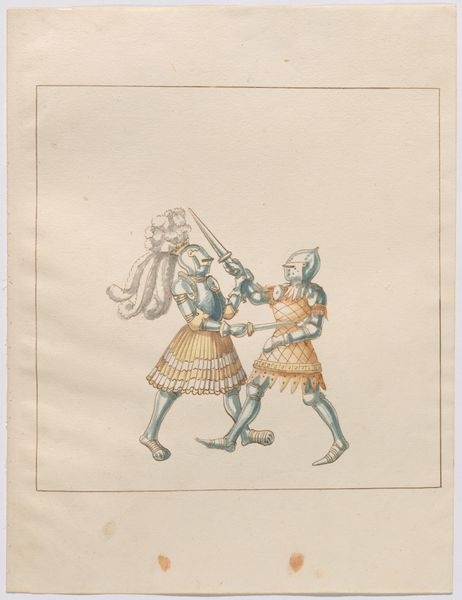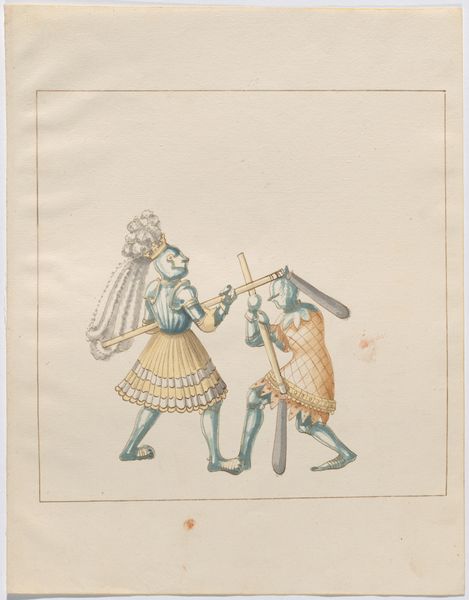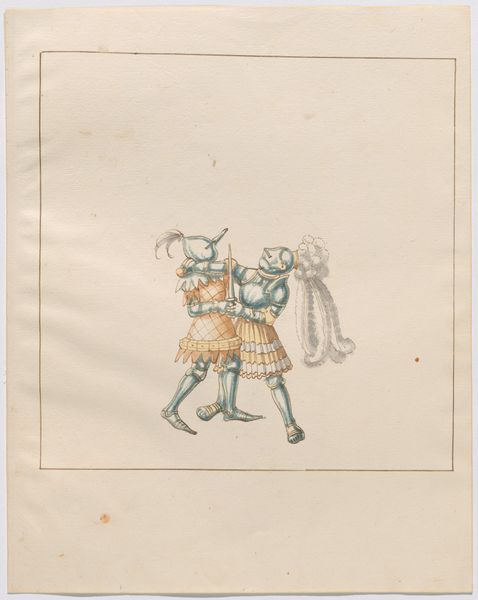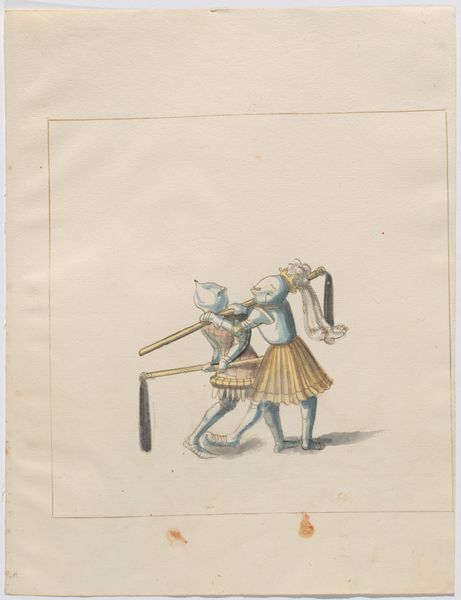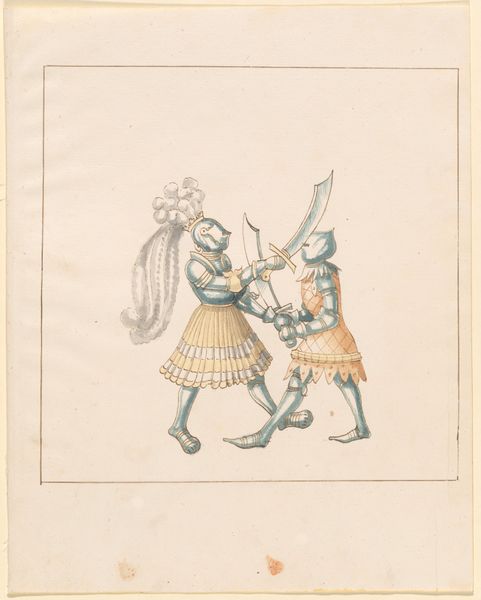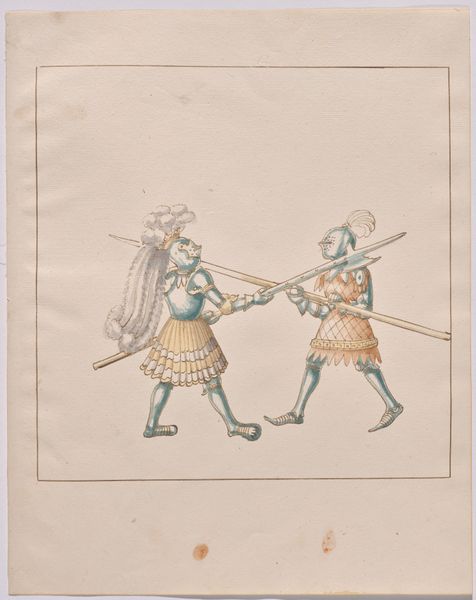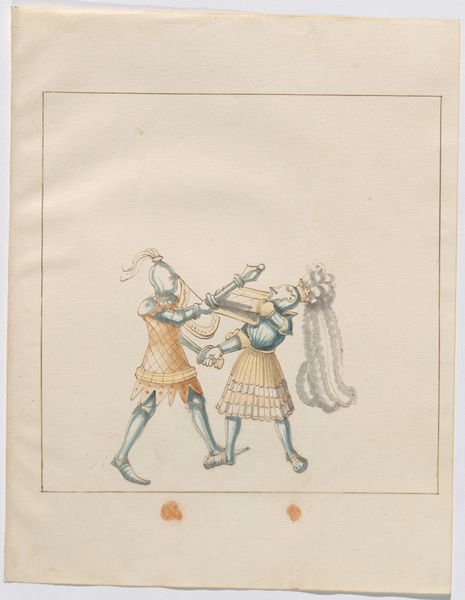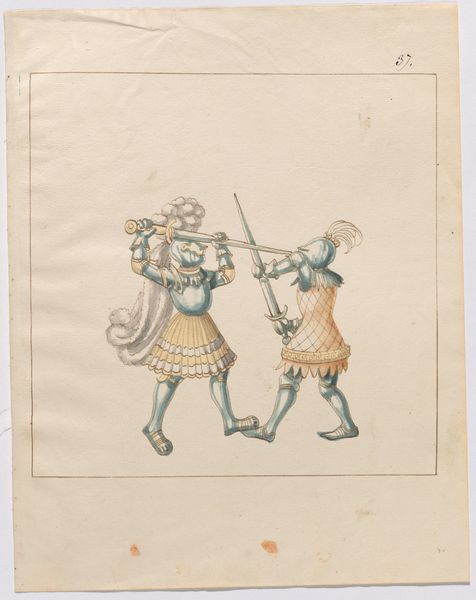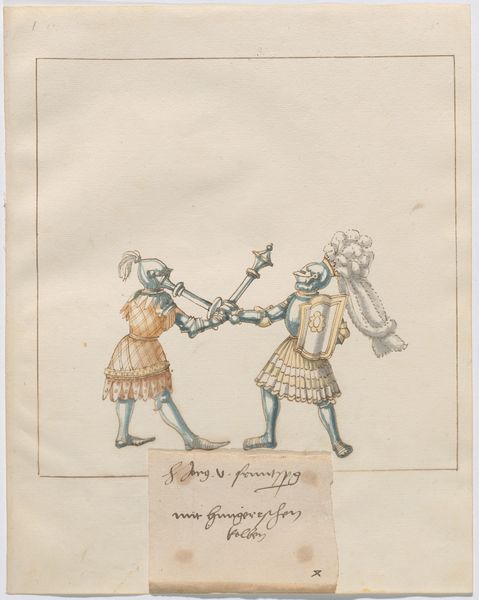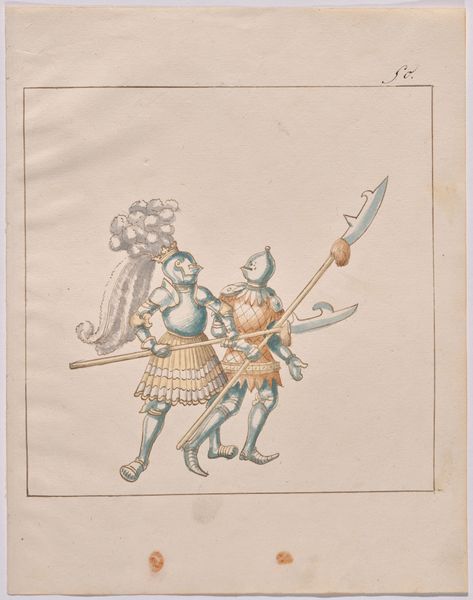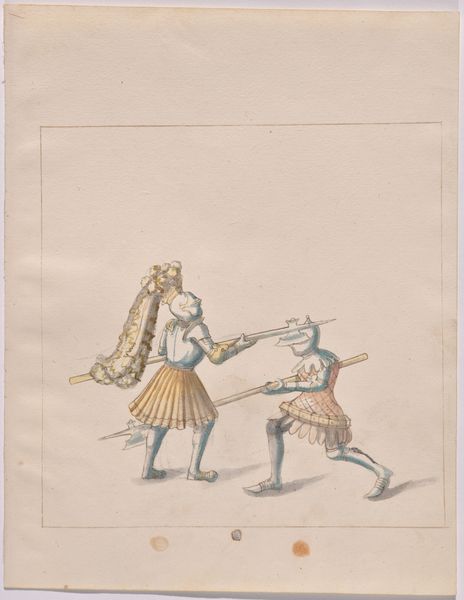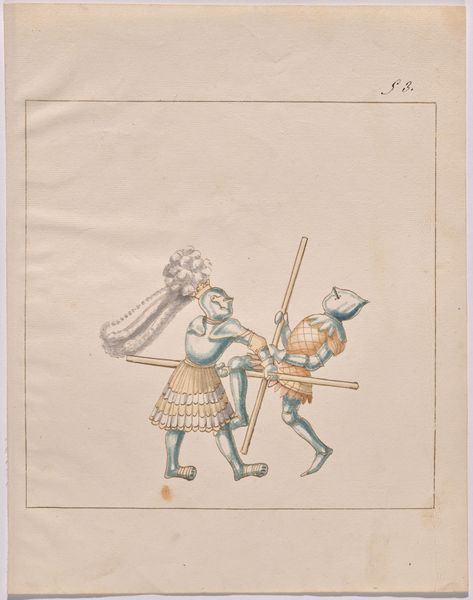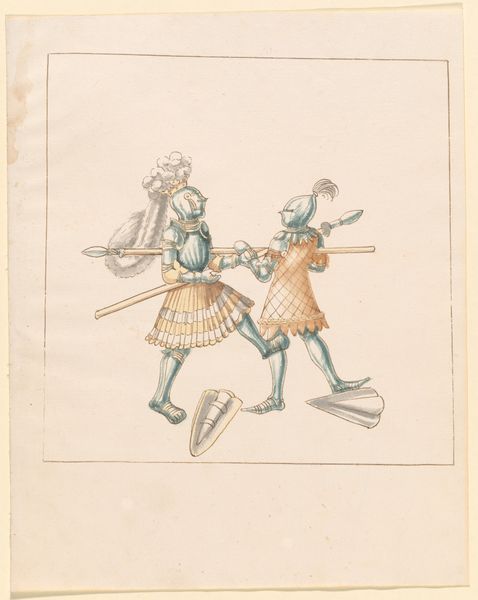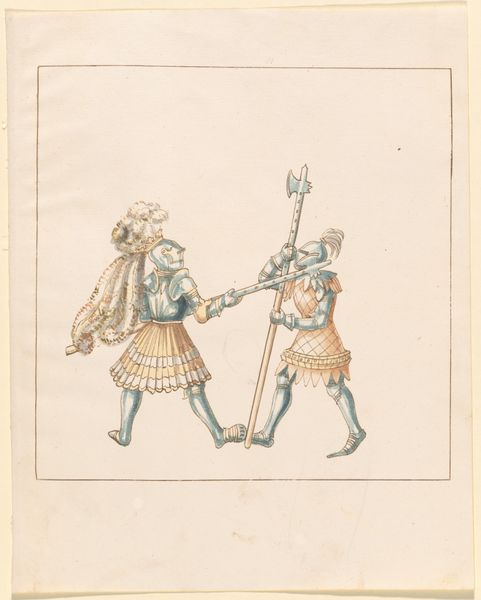
drawing
#
drawing
#
toned paper
#
light pencil work
#
blue ink drawing
#
figuration
#
personal sketchbook
#
ink drawing experimentation
#
sketchbook drawing
#
watercolour bleed
#
watercolour illustration
#
genre-painting
#
history-painting
#
sketchbook art
#
watercolor
Dimensions: sheet: 33 × 26.4 cm (13 × 10 3/8 in.)
Copyright: National Gallery of Art: CC0 1.0
Curator: Here we have an intriguing drawing, "Foot Combat with War Hammers and Tartsche Shields," created around 1512-1515 by an anonymous artist. Editor: It strikes me immediately as a very linear composition, almost schematic in its rendering of the figures. There’s a remarkable stillness, a lack of dynamism despite the subject matter. Curator: Indeed. The image reflects a specific cultural interest in martial arts and weaponry that arose from late medieval and early Renaissance courtly culture. These “combat books” served a dual purpose, instruction, and display of knowledge and power. The shields they wield, "tartsche shields," were quite popular then, mostly for foot combats. Editor: Notice how the light catches the burnished steel. The artist, despite limited color, suggests form through delicate hatching and varied ink tones, wouldn't you say? Also, the paper's toning adds a sort of nostalgic feeling as if one is looking back in time. Curator: The fact that this work may have been found within a personal sketchbook offers significant insight. It reveals aspects of personal practice and intellectual engagement rather than just artistic pursuit. Such illustrations document evolving practices, weaponry designs and their societal place. Editor: There's a distinct sense of restraint, particularly in the minimal application of watercolors; they allow the underlying linear structure to dictate the figures' shapes. It allows the eye to study their forms, almost dissecting the mechanics of movement instead of feeling it. Curator: These images would've been viewed in a specific cultural context, amidst changing social structures and codes of conduct within burgeoning Renaissance courts. Editor: Exactly. This balance between detail and restraint really elevates this piece beyond being a simple genre painting, giving it its unique understated intensity. Curator: And with that perspective, we start seeing the details that provide windows into social norms. Editor: Right. From the delicate precision of its lines to the controlled washes, a masterclass in observation comes together in this piece!
Comments
No comments
Be the first to comment and join the conversation on the ultimate creative platform.
